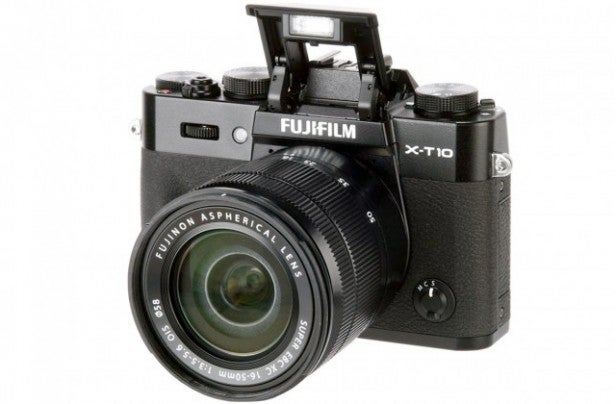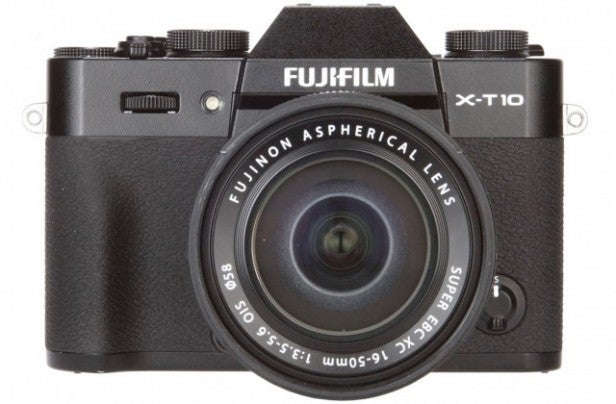FujiFilm X-T10 Review - Image Quality and Verdict Review
Image Quality and Verdict
The X-T1's baby brother is a winner

Sections
- Page 1 FujiFilm X-T10 Review
- Page 2 Screen, Performance and Features Review
- Page 3 Image Quality and Verdict Review
FujiFilm X-T10: Image Quality
The FujiFilm X-T10 has a 16.3-megapixel XTrans CMOS II sensor, the same as the X-T1. This is very good news, meaning it also gets you the same image quality as the X-T1. It’s an APS-C sensor, and it offers the same benefits you get with other cameras in this series. And they’re pretty important.
First, FujiFilm’s CSCs offer great colour. There’s a handful of colour modes designed to emulate classic film stock, such as Astia and Velvia. And while this is a digital concoction it works well, giving natural-looking results that nudge the character of your photos in one direction, rather than offering an obvious ‘Instragram filter’ effect.

JPEG processing is great, meaning that if you’re not keen on having to process your images significantly post-shoot, the FujiFilm X-T10 lets you fire and go without regret. It is a real shame, though, that RAW shooting is relatively limited.
You can only shoot in RAW when within the native ISO range of 200-6400. When using the extended modes you can go all the way up to 51200 and down to 100, offering far greater low-light flexibility. It’s a black mark against the FujiFilm X-T10 for the more hardcore among you.
However, another FujiFilm trait that lives on here is very good higher ISO performance. You get great results up to ISO 3200, with noise only really creeping in noticeably at ISO 1600. Shots are also acceptable at ISO 6400. It becomes slightly easier to live with the FujiFilm X-T10’s RAW ISO restrictions when the native ISOs are those you really want to use. But it remains a shame when other companies don’t do this.

Great colour and strong higher ISO performance are FujiFilm’s ‘special moves’, but its other aspects are very competitive too. It offers as strong detail as we could expect from a 16-megapixel sensor scoring 32l/ph in our labs detail test at base ISO.
Dynamic range is very solid too at 12.4EV, again at base ISO. The dwindling of both dynamic range and detail is, as comes with good higher ISO performance, very respectable until you get to at least ISO 3200.
Metering is very good too, and we just found a tendency to leave white balance a little on the cool side at times. The important bit is you get image quality at the same level as the more expensive X-T1. And it’s good. Very good.
FujiFilm X-T10: Video
While the FujiFilm X-T10 is among the best CSCs at the price for image quality, it’s not quite as competitive on video quality. This can be said about the entire FujiFilm range.
The big issue is that while the rival Panasonic G7 can shoot 4K video, the X-T10 tops out at 1080p, 60 frames per second. That’s not bad and is still the limit for an awful lot of cameras an awful lot more expensive than this one, but is worth considering if you’re going to shoot video as often as stills.
It does have a 2.5mm mic input, though, to let you record higher-quality audio than you can get by using the inbuilt stereo mic.

Should I buy the FujiFilm X-T10?
Like just about every model in the FujiFilm CSC line-up, the FujiFilm X-T10 is a great camera. As well as the charming colour and good higher ISO performance the range is known for, you get a high-end-feeling magnesium alloy body and great manual control.
Just as we hoped, it’s a lot like the FujiFilm X-T1, but smaller.
You can’t really go wrong here. However if you care more about video than stills the Panasonic Lumia G7 is also worth taking seriously. It can shoot video at QHD resolution instead of just 1080p
SEE ALSO: Best Cameras
Verdict
It looks good, feels good and takes great pictures. It’s one of the best small CSCs for stills.
Trusted Score
Score in detail
-
Value 8
-
Design 9
-
Features 8
-
Image Quality 9
-
Build Quality 9
-
Performance 8



